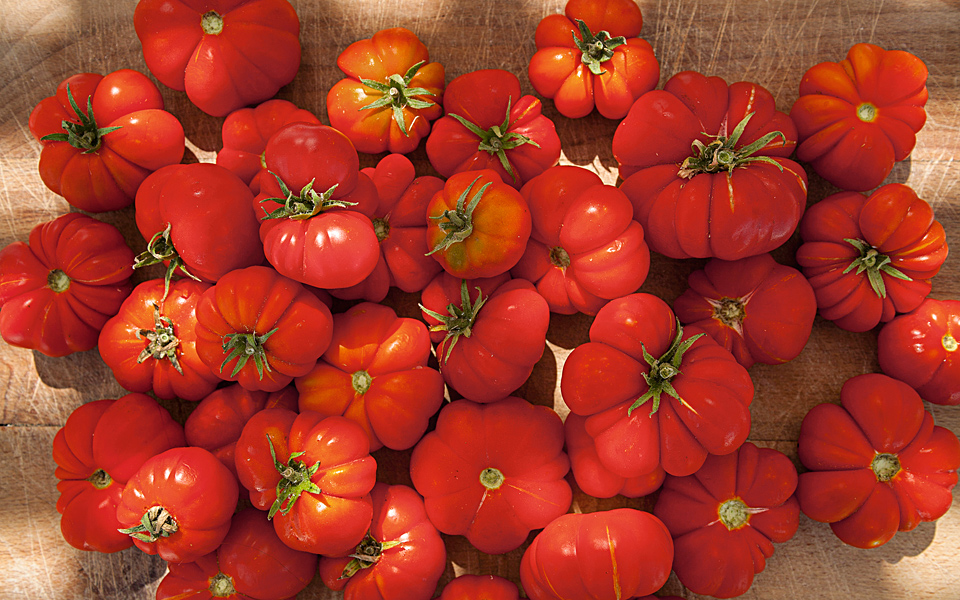Sweet red juice dribbles down the hand of the person who takes a greedy bite out of a Santorini cherry tomato. It has been a good crop this year. In February, when the farmers planted the seeds, they wished for mild winds and low temperatures because gales snap the shoots and heat dries out the fruit. Their wishes came true. Four months later, the bright red fruit sparkles in the fields. In former times, sowing, harvesting and processing was all done by hand. The tomatoes would be collected in wicker baskets in late June. They would be squeezed batch by batch, the skins and seeds sieved to release every drop of precious juice. The seeds were treasured like a talisman, to be replanted nine months later, while the juice was boiled in great metal pots. In July, the flat roofs of houses would turn from white to red, as north-facing wooden racks were filled tomato juice left to dry in the sun. Day by day, with the hot Cycladic sun beating down on the terraces, the juice would thicken as the water evaporated.
In the past, households would only grow as much as they needed to see them through the year. Gradually, however, the locals began to discover the commercial value of their tomatoes and set up small processing units, the island’s first canneries, where the fruit would be passed through makeshift sieves and the condensed tomato juice poured into cans, one jug at a time. Today, 60 hectares of cherry tomatoes are cultivated across the island, yielding 300 tons destined for the new facilities of the Santo Wines Cooperative, the last surviving processing unit on the island. It takes about 3-4 kilograms of fresh fruit to produce one kilo of triple-concentration tomato paste of the type originally made by the locals. Other than paste, juices with varying degrees of concentration and whole, canned tomatoes, the unit also produces a tomato and Vinsanto wine sauce, sun-dried tomatoes and sundry jars and tins of a product that is now exported around the world.
“A star of the local cuisine, the “humble” Santorini tomato has been classified as a product with Protected Designation of Origin since 2013.”
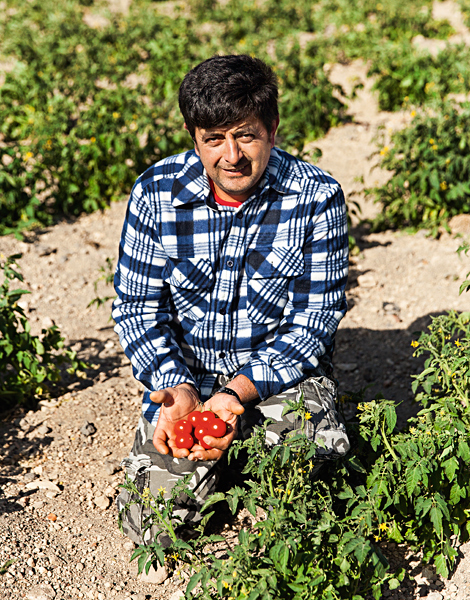
© Dimitris Vlaikos
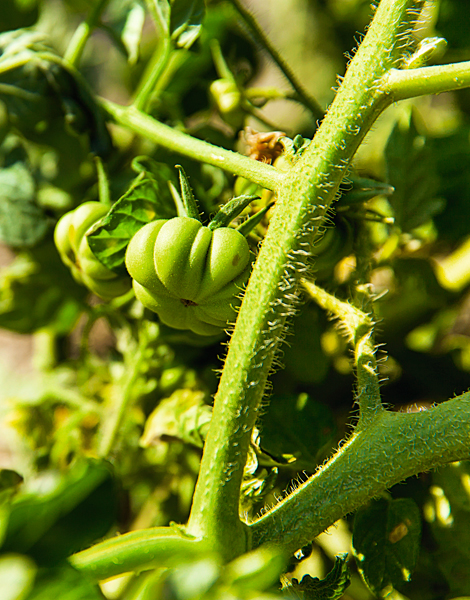
© Dimitris Vlaikos
“The old hands say that to really bring out the flavor of the tomato paste you need to mix it with a few teaspoons of olive oil before you start cooking.”
A star of the local cuisine, the “humble” Santorini tomato has been classified as a product with Protected Designation of Origin since 2013. This tiny fruit, weighing in at just 20 grams, has a thick skin, compact flesh and a bitter-sweet flavor. It forms the cornerstone of a simple yet inspired style of cooking. Only a handful of the imaginative recipes with which housewives fed their families are still prepared today in Santorini’s kitchens. The old hands say that to really bring out the flavor of the tomato paste you need to mix it with a few teaspoons of olive oil before you start cooking. One dollop of tomato paste can transform the supporting cast of garlic, onion and pasta into a hearty manestra (orzo) soup or elevate a slice of baked cod into a regal feast. Using a single chicken from their coops and their own tomato paste, the housewives of Santorini would stretch the ingredients to three or four different dishes: chicken soup the first day, chicken in tomato sauce served with potatoes the next, and pasta cooked in stock made with the leftovers on the third. The larger tomatoes would be stuffed with a little rice and whatever herbs were growing in the garden, and then baked in the oven.
The same casual approach was adopted to make the tomato fritters that are still served at almost every taverna on the island, with the tomato being grated and mixed with all sorts of garden greens such as chard, leeks and onions, along with a few teaspoons of flour to bring it all together. Any tomatoes that remained at the end of July and were still fleshy would be threaded on a string and left to dry in the sun. Once they were well dehydrated, they would be stored in the cool of the canava, the storage area dug into the rock. These would later be used to make rice dishes or to add some flavor to simple vegetable stews.
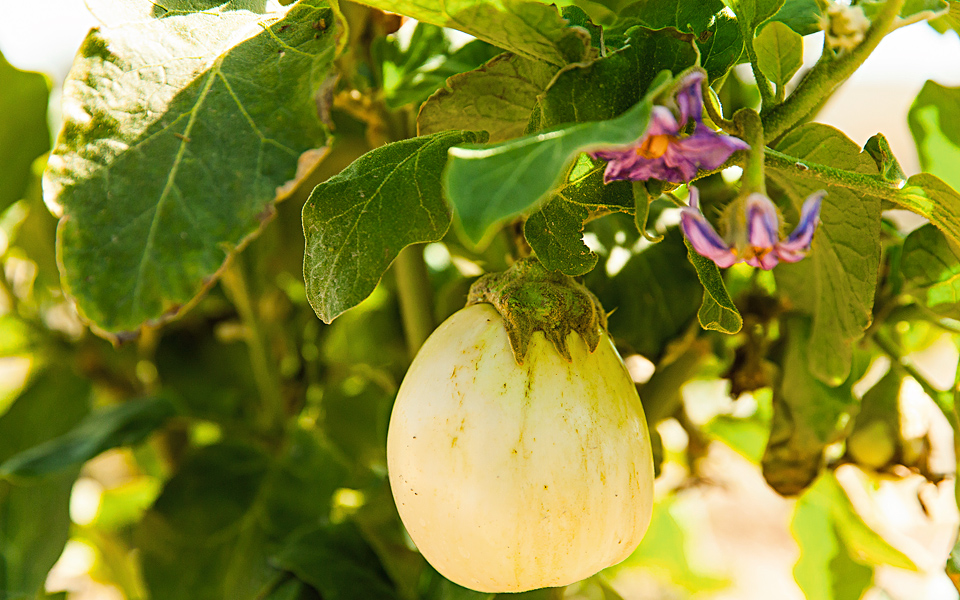
© Dimitris Vlaikos
The white eggplant, another product native to Santorini, is said to have come to the island at some point in the 19th century from Egypt, a major trading partner and export market. They were traditionally used in baked casseroles, where they would be cut into thick slices and cooked with tomato and onion.
The white eggplant harvest coincides with that of the cherry tomato (planted in May, gathered in July), which gave rise to a number of dishes combining the two, such as papoutsakia (baked eggplant with tomatoes and onions instead of the usual minced meat), eggplant and potato casserole with tomato sauce, and scrambled eggs with eggplant and tomato. They were also pickled in vinegar and served as a tasty meze. The flavor of this eggplant is almost indescribable; it is very sweet, with no seeds and rich flesh. It can be found today in the island’s restaurants in many forms; as a puree, in a savory millefeuille, in fritters, in moussaka and in scrambled eggs. Since yields are very low, it is extremely difficult to find off the island, with supply only just sufficient to cover demand on Santorini, so don’t pass up on the opportunity to taste it.
“The flavor of this eggplant is almost indescribable; it is very sweet, with no seeds and rich flesh.”
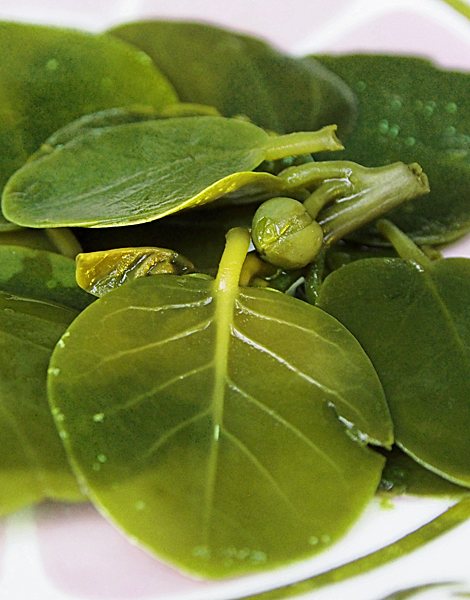
© Dimitris Tsoublekas
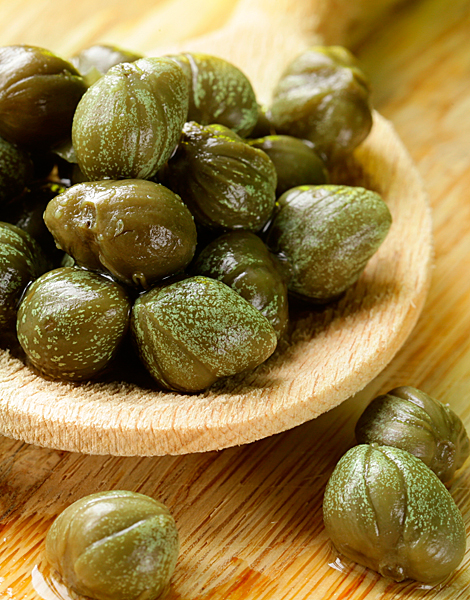
© Shutterstock
“Pickled, baked with vegetables or sprinkled over a dollop of pureed split peas, they offer an interesting, crunchy texture to any dish”
The availability of capers is similarly limited. The caper plant is not cultivated, but can be found only in the wild, sprouting atop the island’s craggy rocks and other unlikely places. It is said that ants carry its seeds to their winter nests so that, a year later, a new caper bush springs up. Farmers and household cooks take to the rocky expanses at the end of April to collect the buds and any leaves. They boil them for a couple of minutes to soak out the bitterness, salt them and then take them to the cooperative. There, the capers are packaged in jars with brine.
Their limited production and labor-intensive harvest make them an expensive delicacy, but the flavor is out of this world. Even though it is a naturally briny product, it is said that the best capers grow on the hills, not by the sea. The entire plant is edible, from the small buds to the leaves and shoots. Pickled, baked with vegetables or sprinkled over a dollop of pureed split peas, they offer an interesting, crunchy texture to any dish and act as a condiment that lends food a pleasantly sea-bitter taste.
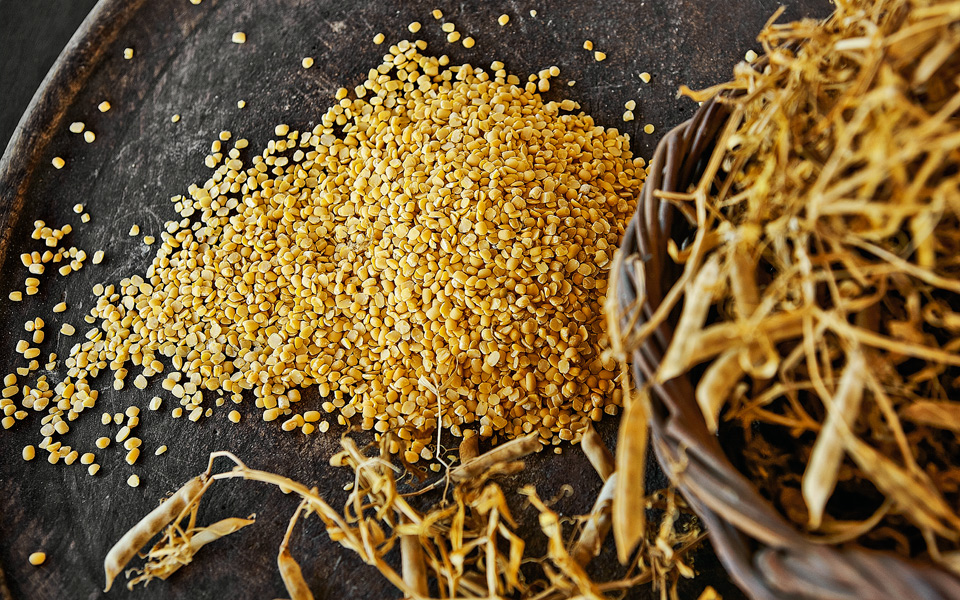
© Antonis Eleftherakis
Now we come to the famous yellow split peas – the tastiest kind of which can only be found on Santorini – which have long been a staple in the islanders’ diet. Known locally as fava, the pulse actually has nothing to do with what is generally referred to as the fava bean. A rich source of protein, these split peas have been growing on Santorini since before the famous volcanic explosion, that is around 3,500 years, according to historians. The seed is planted in December and once it grows, it is left to dry. Farmers collect it early in the day as the morning dew prevents the lightweight grains from scattering to the ground. These are taken to the open-air mill, where donkeys turn the grinding stone to help remove the outer skin. They are then stored in wooden barrels, covered in sand and set aside in a dry space to mature. The longer they rest, the easier they are to peel and crack, making cooking them easier. Production, however, is in constant decline and today the island produces just 150 tons on 180 hectares, which is why the peas are so pricey. Back in the day, it was prepared as gruel, boiled in three parts water, and spooned up with a petal of onion. When served to guests, it was ground into a velvety paste in a gesture of respect and consideration. Every recipe recommends cooking it with onion, which is regarded as its perfect mate. The paste is known as “single” when the onion is added after cooking and “spoken for” when it’s cooked together. Likewise, fava is “engaged” when fried onions are added on top and “married” when it has been cooked a few days earlier and then tossed in a frying pan with sautéed onions. Whichever way it is prepared, it is nearly always served as a meze.
Cherry tomatoes, wild capers, delicious golden fava and sweet white eggplant are the stars of Santorini’s cuisine. You can taste them in their traditional variations at tavernas across the island or seek out more sophisticated preparations at high-end restaurants. Before you leave the island, get a few jars or tins of these wonderful products so you can relive the flavor of Santorini at home.
“A rich source of protein, these split peas have been growing on Santorini since before the famous volcanic explosion, that is around 3,500 years”

